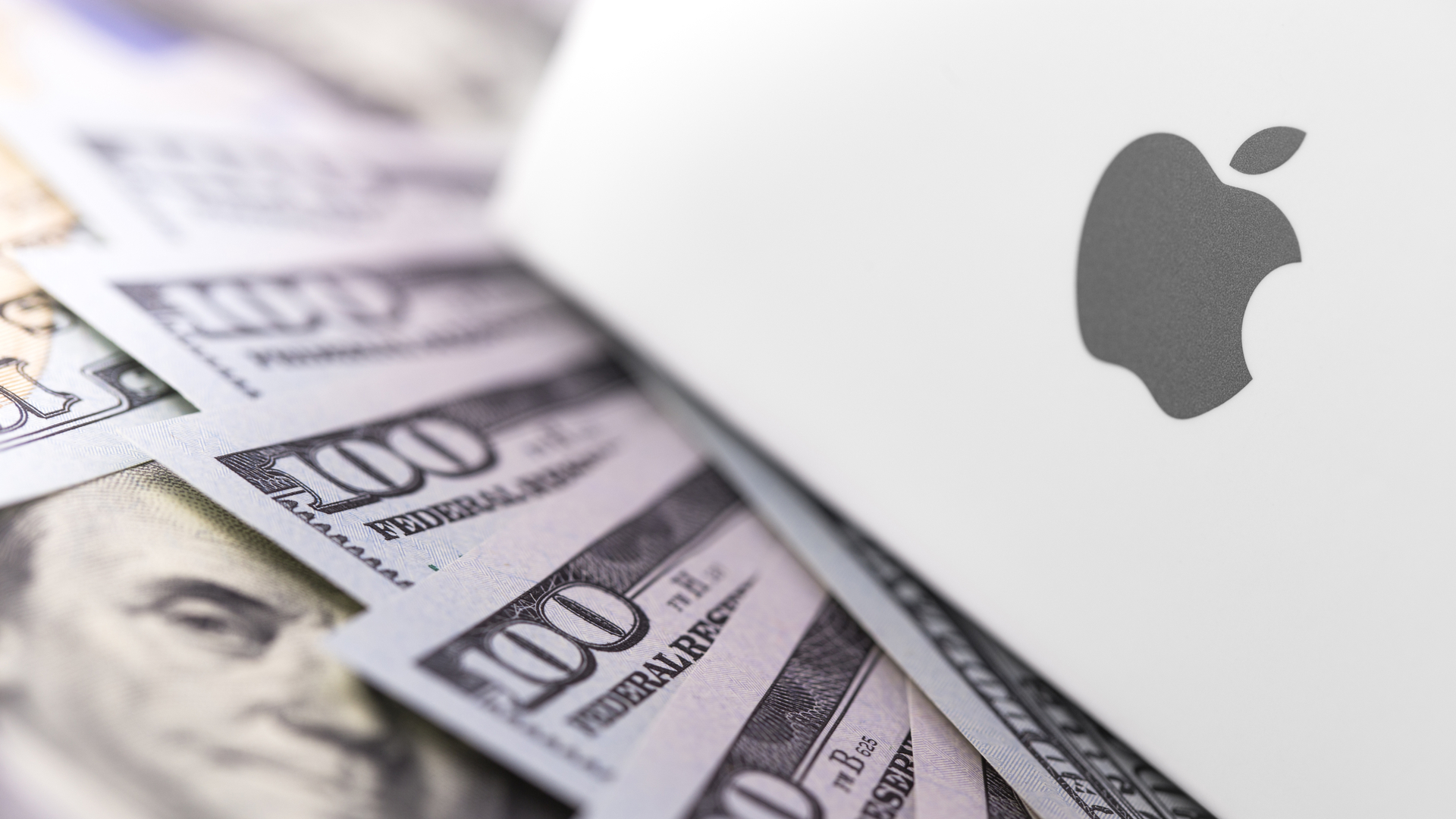Apple becomes first US firm to reach $2 trillion valuation
It took the iPhone manufacturer 42 years to reach a $1 trillion market cap but just two years to double it


Apple has become the first US-based company to reach a valuation of $2 trillion only two years after hitting a $1 trillion market cap, despite the coronavirus-fuelled economic turmoil that’s devastated so many businesses.
While Apple may dip below the $2 trillion mark in future, depending on its market performance, it’s is a major milestone and testament to the resilience of the company and its dominance against some of its major rivals.
The scale of its surge in valuation has also been extraordinary, with the company only taking two years to achieve a second trillion dollars in valuation versus the 42 years it took the firm to reach the $1 trillion market cap.
The company’s shares soared in value during 2020, gaining by roughly 60% in value despite the economic disruption caused by COVID-19, both to other businesses and even national economies. Over the last year, meanwhile, Apple shares have climbed more than 120%, according to CNBC.
The US economy, for example, contracted by 32.9% during the second quarter of 2020, while the UK GDP fell by 20.4%. Apple’s revenue, during the same period, was $59.7 billion, far exceeding expectations and forecasts, climbing 1% year-on-year. This growth was fuelled mainly by the sale of hardware, and profits from services.
This was representative of the performance of most tech and cloud companies during the ‘coronavirus quarter’, for the most part, defying the performance of the wider economy to achieve rising revenues.
While Apple’s hardware, especially its iPhones and Macs, has been a major source of revenue through the years, a massive expansion in its software and services businesses have been critical to its growth. Piper Jaffray analyst Michael Olsen claimed Apple’s service business was worth approximately $502 billion in 2019, against an estimated $398.8 billion valuation attached to its hardware business, according to Investopedia.
Sign up today and you will receive a free copy of our Future Focus 2025 report - the leading guidance on AI, cybersecurity and other IT challenges as per 700+ senior executives
To outline the scale of growth in the last decade, revenue from services during the 2019 fiscal year was $46.3 billion, including iCloud storage, Apple Music, and AppleCare warranties, as well as Apple TV+ and Apple Arcade most recently. By way of comparison, in 2010, Apple’s services businesses only generated $5.2 billion in revenue, although this doubled over the next two years to $10.2 billion, and has surged since then.
An area that Apple hasn’t explored in much depth against some of its trillion-plus-dollar US-based rivals Amazon, Google and Microsoft, is enterprise services, suggesting there's room yet for Apple to grow further in the coming months and years.
Ahead of the iPhone 11 launch in 2019, the company’s vice president of apps and services, Susan Prescott, discussed how the company does plan on beefing up its enterprise strategy, according to Forbes.
The strategy, Prescott said, would build on the momentum that Apple sparked with the launch of the iPhone in terms of ‘bring your own device’ (BYOD) and the consumerisation of IT. Elements such as user enrollment, which allows two Apple IDs on a single device, represent the start of this strategy, making it easier to use devices like iPads and iPhones in a business environment where devices may be exchanged between staff regularly.
The growth in Apple’s enterprise business can also be seen in some of its recent moves, including the acquisition of the enterprise security company Fleetsmith in June 2020. The company, founded in 2014, specialises in management and security services that allows administrators to oversee their fleet of enterprise devices.

Keumars Afifi-Sabet is a writer and editor that specialises in public sector, cyber security, and cloud computing. He first joined ITPro as a staff writer in April 2018 and eventually became its Features Editor. Although a regular contributor to other tech sites in the past, these days you will find Keumars on LiveScience, where he runs its Technology section.
-
 Microsoft CEO Satya Nadella wants an end to the term ‘AI slop’ in 2026
Microsoft CEO Satya Nadella wants an end to the term ‘AI slop’ in 2026News Microsoft CEO Satya Nadella might want the term "AI slop" shelved in 2026, but businesses will still be dealing with increasing output problems and poor returns.
-
 New security features are coming to Microsoft Teams this month
New security features are coming to Microsoft Teams this monthNews From 12 January, weaponizable file type protection, malicious URL detection, and a system for reporting false positives will all be automatically activated.
-
 UK firms are pouring money into AI, but they won’t see a return on investment unless they address these key issues
UK firms are pouring money into AI, but they won’t see a return on investment unless they address these key issuesNews An SAP report projects increased AI investment, but cautions that too many organizations are taking a fragmented approach
-
 Intel makes high-level hires while factory workers are warned of layoffs
Intel makes high-level hires while factory workers are warned of layoffsNews The company is appointing four senior executives as part of efforts to refocus on engineering and customer relationships
-
 UiPath names Simon Pettit as new AVP for UK and Ireland
UiPath names Simon Pettit as new AVP for UK and IrelandNews The seasoned leader will spearhead region-specific transformation projects as UiPath looks to drive operational growth and customer engagement
-
 How to empower employees to accelerate emissions reduction
How to empower employees to accelerate emissions reductionin depth With ICT accounting for as much as 3% of global carbon emissions, the same as aviation, the industry needs to increase emissions reduction
-
 Worldwide IT spending to grow 4.3% in 2023, with no significant AI impact
Worldwide IT spending to grow 4.3% in 2023, with no significant AI impactNews Spending patterns have changed as companies take an inward focus
-
 Report: Female tech workers disproportionately affected by industry layoffs
Report: Female tech workers disproportionately affected by industry layoffsNews Layoffs continue to strike companies throughout the tech industry, with data showing females in both the UK and US are bearing the brunt of them more so than males
-
 How can small businesses cope with inflation?
How can small businesses cope with inflation?Tutorial With high inflation increasing the cost of doing business, how can small businesses weather the storm?
-
 How to deal with inflation while undergoing digital transformation
How to deal with inflation while undergoing digital transformationIn-depth How can organizations stave off inflation while attempting to grow by digitally transforming their businesses?